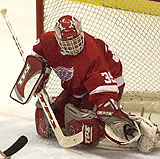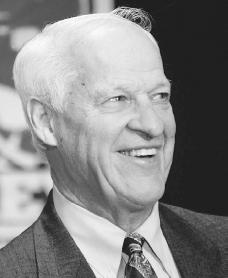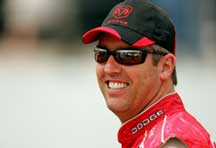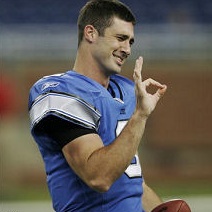They have come from football-rich schools like Notre Dame and Oklahoma and UCLA, and from the next tier below, and a few tiers below that. They have been black, white, with brute strength, and with fancy feet. But there is a common thread between them.
The men who have carried a football for the Detroit Lions in the position of running back, the pertinent ones anyway, all have flickered brightly for brief periods of time, then have had their flames snuffed out by injury. It’s still happening, some 40 years after it began occurring.
The potential star that is Kevin Jones is in the middle of the mother of all rehabs, when it comes to foot injuries. He’s trying to come back from such a mangled wreck going on below his ankle that some medical people wonder if he will ever play again. So the Lions have been gathering running backs like acorns before the winter: Tatum Bell, from Denver in a trade for cornerback Dre’ Bly; TJ Duckett, the ex-MSU star, signed away from Washington. And others are being considered, too.
It’s been a struggle for the Lions, finding capable players to take handoffs and make yards, all the while keeping them healthy for any significant amount of time.
There was Nick Eddy, out of Ara Parseghian’s football factory in South Bend. Knee injuries in college, but the Lions took a flyer on him in the 1966 draft. Alex Karras once said that he’d never seen anyone try harder to make it in pro football than Nick Eddy. But in six injury-ravaged seasons, Eddy carried the ball 152 times for 523 yards and three touchdowns, until his painful knees couldn’t take it any longer.
There was Mel Farr, drafted the year after Eddy, out of UCLA. He shone brightly for a few seasons, before the dreaded knee injury forced him into a life of cape-wearing and car-hawking on television.
In 1970, the Lions picked Heisman Trophy winner Steve Owens off the board out of Oklahoma. He rushed for over 1,000 yards in 1971. Three years later, he played his last game as a Lion. Knee injury, that heartless career-ender.
Ten years after Owens was drafted, the Lions went the Heisman Trophy winner-out-of-Oklahoma route again, when they nabbed Billy Sims, the high-stepping speedball and eventual Lions fan darling. And he thrilled for a few seasons, before a cruel tackle in Minnesota in 1984 ended it all for him.
If it wasn’t injuries, it was a simple lack of capable talent that did in the Lions’ running backs in the interim periods between these high-profile cases. Backs came and went, and so many times they had us still asking, “Who?” even after they had left town.
But there was a time, an era really, when the Lions surely must have sold their soul to the football Devil. For when Barry Sanders, that whirling dervish, arrived in Detroit in the fall of 1989, all the bad luck, curses, and futility when it came to the team’s running backs vanished.
Sanders, for ten virtually 100% healthy seasons, produced enough highlights and thrills and chills to make up for all the garbage that happened prior to his arrival.
Now, it seems, Sanders’ brilliance is apparently going to have to wash away all that has come after him, as well.
The 2007 season will be the ninth, believe it or not, that the Lions will try after Sanders abruptly retired prior to training camp in 1999. And there is no real indication that they’ve even come close to finding their running game mojo.
The history post-Sanders reads much like the history before his arrival.
There was Greg Bell, brought in to be the first runner after Barry retired, and if you forgot how that went, think Rick Rizzs and Bob Rathbun after Ernie Harwell. That’ll give you an idea.
There was James Stewart, who was capable, but who blew out a shoulder in the last preseason game of 2003. Never again would he tuck a football under his arm.
There was Olandis Gary, who showed some potential in Denver, but who couldn’t find a hole in a block of swiss cheese as a Lion.
Then the Lions drafted Jones in 2004, out of Virginia Tech. He looked like something, especially in the second half of his rookie season, when he rushed for over 700 yards. 2005 was a little disappointing, and then came last season’s foot injury extraordinaire. Only the most optimistic believe Kevin Jones can fully recover from his injury and be that star he looked to be in 2004.
So now the Lions are trying Tatum Bell, a 1,000+-yard rusher in Denver last season. And they’ll try Duckett, who had a couple good seasons in Atlanta. And Aveion Cason. And Brian Calhoun. And anyone else they choose to acquire.
“You can never have too many running backs,” President and GM Matt Millen said recently.
Well, yes, that’s true – if you can’t find a good one and keep him healthy, that is. There’s another more terse, derisive name for what the Lions are trying to do: running back by committee. And when was the last time anything good ever came from a committee, honestly?
The Lions put up their big top and the calliope music played, in the years before Barry Sanders, when it came to their running backs. Then Barry came, spent a decade, and the calliope music was replaced by a melodic string section and the film was played in slow motion.
Now he’s been gone over eight seasons, and the Lions went right back to the cotton candy and the three rings.
Maybe Tatum Bell will be something here. Maybe Kevin Jones can heal his foot and be a player again. Maybe a new back from the draft, or from free agency, or from another trade, will make his mark. Whomever it is, maybe they’ll avoid the injury bug and their flame won’t flicker and die so prematurely.
Maybe all that’s as likely as seeing Barry Sanders reincarnated in another draft.
It’s kinda looking that way, I would say.


































